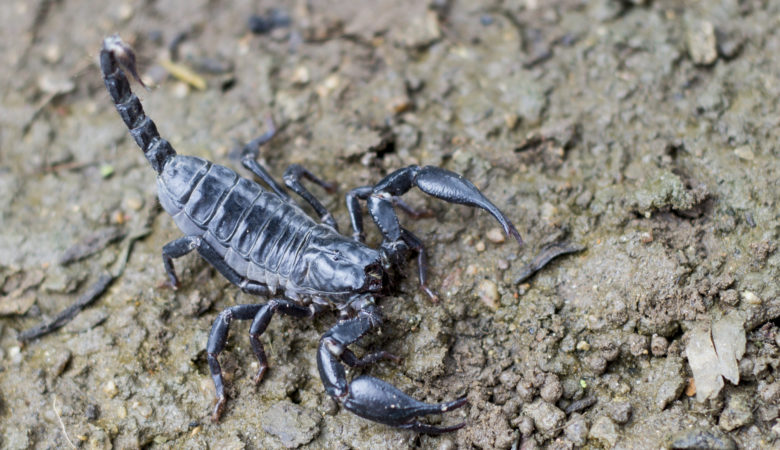How Climate Change Helped Unleash a Plague of Deadly Scorpions

If you’ve been paying attention to the news recently, you might have noticed news reports of a deadly scorpion plague in Egypt. No, we didn’t regress to Biblical times (although no one would blame you if you wondered).
As heavy rains and hail moved over the Aswan province last month, scorpions took the opportunity to move in with hundreds (and perhaps more) households. 503 people were treated for scorpion stings. No one died in this particular plague—but if they were unable to get the anti-venom, they would have.
Climate change is wreaking havoc on the planet, and this is just the latest example of how it can harm us in unexpected ways. In drought-stricken areas, unusual rain events are often thought of as a blessing. But as Northern California recently learned, be careful what you wish for.
Plagues of scorpions, mudslides, fallen trees, extreme drought: these are all results of climate change. Here’s how climate change is creating extreme weather events.
Why does climate change create extreme weather events?
According to the Environmental Protection Agency (EPA), “scientific studies indicate that extreme weather events such as heat waves and large storms are likely to become more frequent or more intense with human-induced climate change.”
We’ve seen temperatures rising steadily over the last 20 to 30 years—in fact, all ten of the global hottest years on record have occurred since 2005. The earth’s warming trends have led to extreme weather events, including:
- Droughts and heat waves: With rising temperatures comes increased evaporation. Places like California continue to undergo severe drought. The last few decades have seen increasingly hotter, longer heat waves. These dry out the vegetation, sap freshwater supply and heat up the ground temperatures, since there are fewer plants to keep the ground cool. This makes the land hotter and drier overall.
- Wildfires: With droughts and heat waves come increased risk for wildfires. It’s hard to miss the news coverage of West Coast wildfires over the summer—in some years, the smoke has blown across the entire United States. Thousands of people have lost their homes, and still more have been evacuated during wildfire season. The hotter and drier the temperatures, the drier the remaining vegetation becomes. This creates millions of acres of kindling.
- Storms and flooding: Evaporation is once again responsible for heavy rains and flooding. As more water evaporates into the atmosphere, more comes down in torrential rains. This is especially bad if you live in a drought-stricken or wildfire-scarred area. The lack of roots from plant cover make the land more susceptible to erosion, mudslides and flooding.
- Cold snaps: Climate change is also responsible for extreme cold snaps and snow. Chances are you’ve heard someone complain that global warming can’t be real—just look at how cold it is. Scientists suspect that the warming Arctic temperatures weaken the polar jet stream, allowing colder air to travel farther south. Similarly, since there’s more moisture in the air from evaporation, when temperatures drop below freezing, heavier snowfall occurs.
As we know from Egypt’s plague of scorpions, all that extreme weather can lead to other phenomena—like deadly scorpions taking shelter in your home while you sleep.
Remember the difference between weather and climate
The next time someone tells you that global warming must be a sham, given the snowfall or freezing temperatures, remember the different between “weather” and “climate.” Weather is the state of the local atmosphere at any given moment, whether it’s foggy in San Francisco or hot and humid in Austin. Weather is a short-term phenomenon.
Climate, on the other hand, is a long-term phenomenon. It’s the average weather over a longer period of time. Temperatures might fluctuate on a daily basis—but when the long-term average starts steadily increasing, that’s an indication of climate change. It’s why one heavy rainstorm doesn’t mean the drought in California is ending, nor does Texas’s devastating February 2021 cold snap mean that global warming is over.
The bottom line
As the average temperatures increase, we can expect to see more of these extreme weather events. The only thing that we can do as citizens is to vote, be environmentally conscious and try to cut down on our carbon footprint. Since the largest sources of carbon emissions are usually from corporations, it’s crucial to elect officials who will take on this massive challenge. Otherwise, we’re headed down a path that has more devastating consequences than scorpions for bedmates.

